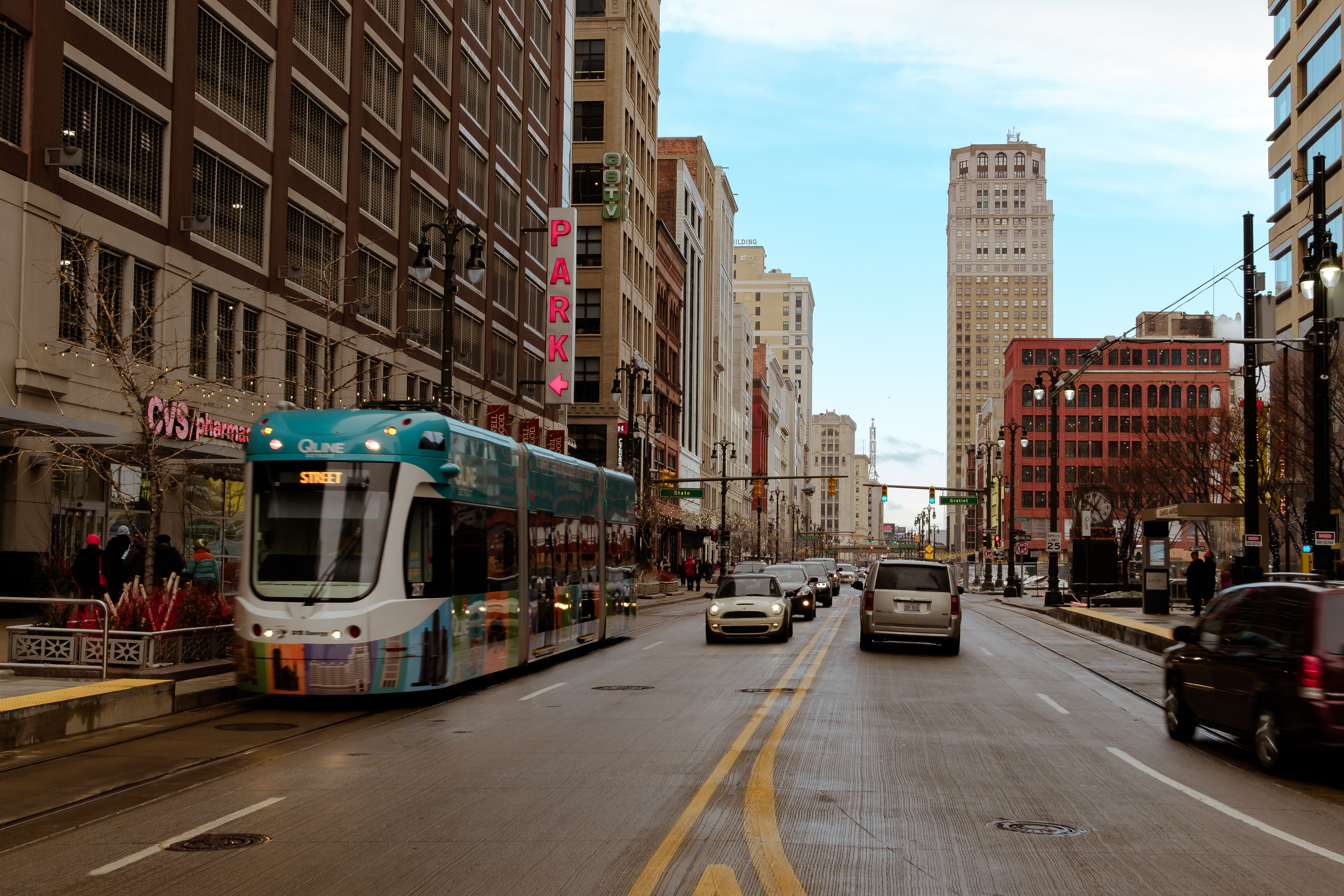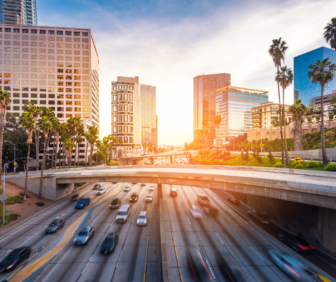![]() We finish our new report, “A path to good-paying careers for all Michiganders: Creating places across Michigan where people want to live and work,” and this blog series, with a deep dive into transportation. Transportation is at the epicenter of most of the themes of this report. It is Exhibit A––along with Flint water––of the state allowing its 20th Century infrastructure to crumble. Transportation is also a basic service and a high-priority amenity. It is best designed and provided regionally. It is a leading-edge example of an infrastructure that needs to be transformed for the 21st Century. And it is, almost certainly, the most powerful lever in the creation of high-density neighborhoods and communities.
We finish our new report, “A path to good-paying careers for all Michiganders: Creating places across Michigan where people want to live and work,” and this blog series, with a deep dive into transportation. Transportation is at the epicenter of most of the themes of this report. It is Exhibit A––along with Flint water––of the state allowing its 20th Century infrastructure to crumble. Transportation is also a basic service and a high-priority amenity. It is best designed and provided regionally. It is a leading-edge example of an infrastructure that needs to be transformed for the 21st Century. And it is, almost certainly, the most powerful lever in the creation of high-density neighborhoods and communities.
First, transportation policy must create access for Michiganders to meet their daily needs: jobs, healthcare, education, shopping, and civic life. For most that means well-maintained roads that are not a threat to people and their vehicles. But the reality is that not all of us have access to a car. In every Michigan community, there are some residents who do not own or drive a car—and more and more, as young adults reject a car-based lifestyle.
A survey of Millennials in 10 major U.S. cities released by the Rockefeller Foundation and Transportation for America in 2014 found that 80 percent of respondents agreed that it’s important for communities to have a wide range of options, including car- and bike-sharing, pedestrian- friendly streets, bike lanes, and public transit.
Making a new approach even more urgent is the fact that it’s clear that autonomous vehicles are coming. It is a question of when, not if. And that means radical change in the industry that drives Michigan’s economy, in how we live our lives, and how our communities are structured.
Lyft’s co-founder John Zimmer in a Medium article entitled “The Third Transportation Revolution” predicts: “By 2025, private car ownership will all-but end in major U.S. cities.” He writes:
As a result, cities’ physical environment will change more than we’ve ever experienced in our lifetimes. … The end of private car ownership means we’ll have far fewer cars sitting parked and empty. And that means we’ll have the chance to redesign our entire urban fabric. Cities of the future must be built around people, not vehicles. They should be defined by communities and connections, not pavement and parking spots. They need common spaces where culture can thrive — and where new ideas can be shared in the very places where cars previously stood parked and empty.
So the policy priority for the Michigan is not more money to simply rebuild its current transportation system, it is to find the political will to do what we did for most of the last century: be a global leader in building the transportation system for the future.
In particular, there is good evidence that light rail has the greatest potential to drive economic development, especially when carried out in concert with other community and economic development planning efforts. Politico describes the transformative impact of regional light rail in an article entitled, “The Train That Saved Denver: The car-choked city overcame regional distrust to build a major transit system that is remaking the urban core and the suburbs, too.” Author Colin Woodard writes that ‘Light rail has really moved Denver into the 21st century.”
In 1999, voters in Denver approved two bond measures to finance the highway and light rail system, demonstrating that residents are willing to pay for meaningful transportation investments. By 2006, the $1.67 billion Transportation Expansion Project had added 19 miles of light rail and pedestrian bridges, improved highway merging, and widened 17 miles of highway to relieve congestion and handle 300,000 vehicles per day. When the national recession and budget overruns threatened Denver’s plans to build a 21st Century rail system, then-Denver Mayor John Hickenlooper decided that the city only had one option: they had to go big.
In 2004, after a campaign that was largely led by Hickenlooper, metro Denver voters approved a plan to raise $4.7 billion to build FasTracks, a rail system that boosters believed would benefit the entire Denver region. Hickenlooper insisted that instead of building Denver’s system line by line, the region needed to accelerate plans to build a fully-functional, truly regional rail system to make itself more attractive to Millennials and job creators. The most recent addition to this regional transportation network came in April of 2016, when Denver opened a 22.8-mile spur from its airport to its downtown. Using a unique mixture of public-private partnerships, creative real estate deals and sheer political will, Hickenlooper and his allies pushed the region to create a state-of-the-art system that is widely credited with making Denver an economic growth hub.
Michigan’s current transportation system is far away from being world class on any of the attributes we just explored. Across the state we have a crumbing 20th Century road system; minimal public transportation, just the beginnings of walk- and bike-friendly communities, and, by and large, we have not used transportation as a lever to catalyze high-density neighborhoods and communities.
Our transportation proposals, most importantly, involve redefining the goal and the path of transportation policy. Once Michigan gets on a new path, the state and its regions will find a legion of expertise and experience from across the country on how to design, fund and implement a world-class 21st Century transportation system to help create places where people want to live and work.
Click here for the full report.
Photo credit: JKPhotogenic/Shutterstock.com.







